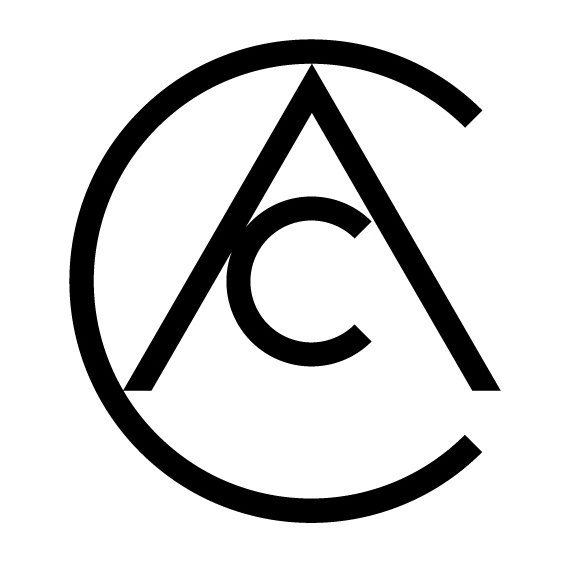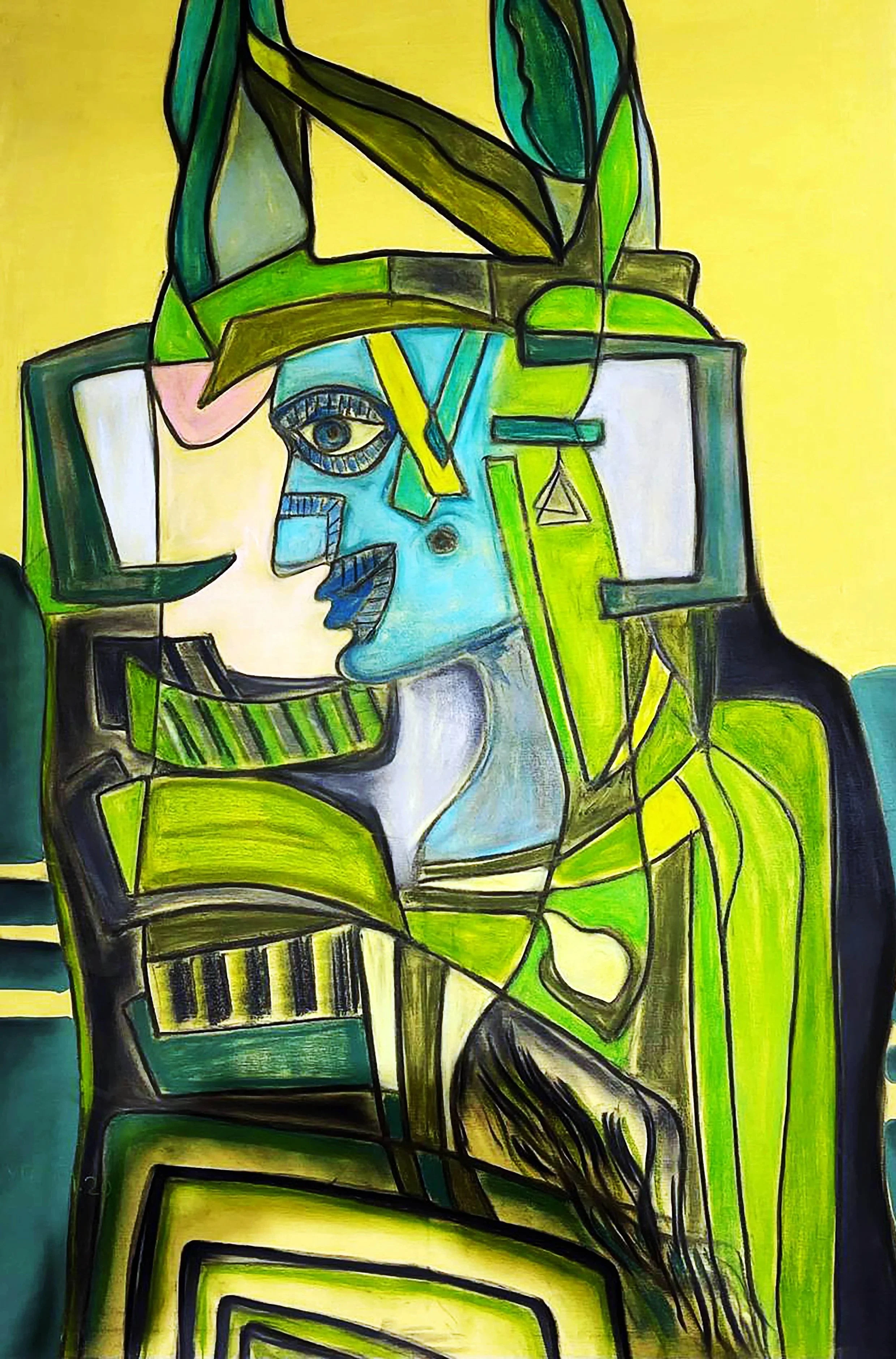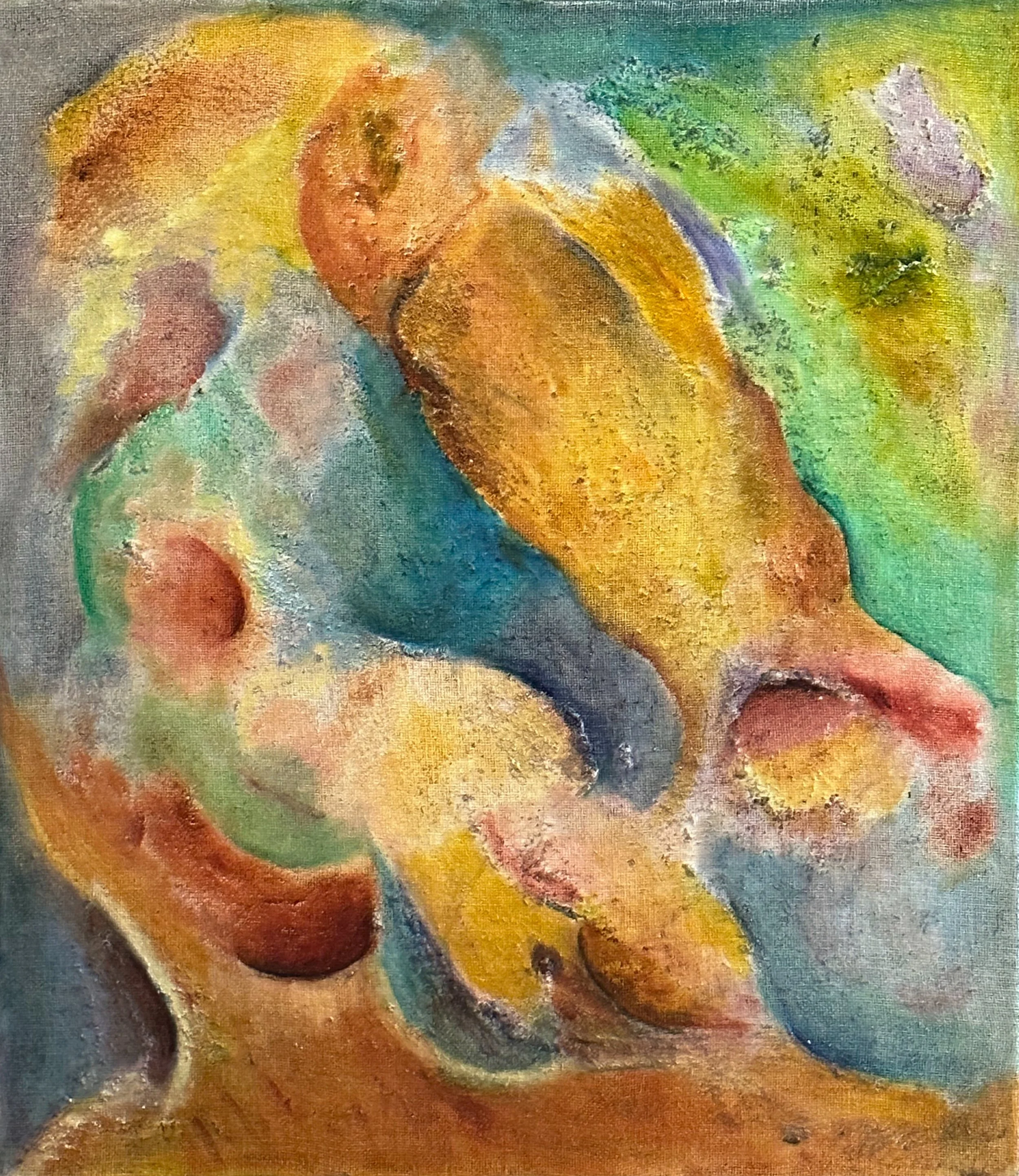Pu Wei
There are painters who pursue surface, and there are painters who pursue structure.
Pu Wei is among the rare artists for whom structure is not only pictorial but ontological: the underlying order that makes a picture possible becomes the very subject of the work.
Born in Kunming, Yunnan, and trained in the classical material intelligence of ink, water, rice paper, and mineral pigments, she has taken the language of Chinese brush painting and submitted it to a radical re-reading through Dzogchen Buddhism and Yogacara philosophy. The result of her ongoing project, named The Color of Surupa, is less a style than an epistemology. It proposes that abstract painting need not stop at the revolution of form; it can move, as Pu insists, toward an awakening of consciousness.
This proposition arrives neither as a manifesto written against history nor as a parody of tradition. It arises from within painting’s material conditions, fluidity, absorption, capillarity, stain, diffusion, and binds them to a rigorous meditative praxis. In the studio, she empties intention until the “thoughtless brush” becomes an instrument for what she calls the “self-manifestation of mind.” In the image, discrete forms recede while serial, interpenetrating fields surge forward: colors are not applied as signs; they precipitate, bloom, and evaporate as events. The viewer does not “read” Pu Wei; one enters a breathing, afocal continuum where every area of the paper is equally charged, every incident tethered to the next by a system of relations that is both optical and metaphysical.
Consider Void Realm Series – NO. 20180510 (136 × 136 cm). The painting unfurls as a lateral weather system, a swarm of cobalt, lilac, and midnight blacks riven with jets of white. Drips and splatters register like indices of causation, proving that water, ink, and gravity have been allowed to convene. But the surface is not chaotic; its turbulence has grammar. Streaks of light move as if across a long exposure, and bursts of white erupt at intervals, establishing a rhythm that hovers between the astronomical and the cellular. It is tempting to analogize these detonations to stars or synapses; Pu’s own terms would be “high-frequency light,” the “rainbow light” that Dzogchen names as the energetic signature of awakened mind. The crucial point is that the painting does not represent these lights; it enacts their emergence. The pigments seep into rice paper like dye into living tissue; the paper, a porous breath, returns an image that is not on the surface so much as within it.
By the time we reach Void Realm Series – NO. 20221018 (136 × 136 cm), color has taken on the hue of landscape limes and teals constellate into a forested murmuration, but the pictorial logic remains resolutely non-figurative. White traceries thread across the field like afterimages of branches, yet they do not delineate objects; they mark channels along which Qi circulates. This is Pu’s Eastern aesthetics of mind and nature: not nature as motif, but as a mode of a system of flows. In this painting, the viewer’s eye never arrives at a focal climax; focus is everywhere and nowhere. The composition is holographic in the Yogacara sense: each part contains the information of the whole, each region an aperture into the painting’s larger respiration.
In Void Realm Series NO. 20240723 and NO. 20241122 (both 90 × 180 cm), the scale widens to a cinematic panorama. Pu distributes hot yellows and rose auroras against fields of violet and indigo. The works are built from hundreds of microevent pools, droplets, and eruptions, yet the accumulation does not become noise. Instead, the eye perceives a counterpoint between granular accident and slow tectonic drift. The lower margins consolidate into darker bands, a kind of gravitational floor from which columns of brightness rise like vapor. Here, the paintings approach what might be called an “open architecture of light,” a structure without walls where the subject is the passage from density to radiance. The drip so overdetermined in modernist discourse functions in Pu’s hands not as gestural bravura but as a registration of time, of water moving through paper, of the momentary becoming visible.
NO. 20221008 and NO. 20230612 (both 68 × 68 cm) compress this vastness into intimate squares. In 20221008, cool pools of turquoise and ink black recur like islands amid a milky atmospheric wash. What first reads as splatter resolves, with sustained attention, into constellations, each cluster ringed with a halo, as if color were sweating light. In 20230612, a bright aquamarine ground receives black granulations that seem to “float up” from the paper itself. The sensation is double: the surface reads as both aqueous and mineral, a sea breaking into stone. The paintings are laboratories in which material states are no longer discrete, solid, liquid, or vapor, but liminal. Pu renders these thresholds as metaphors for consciousness: the interval in which a thought rises, lingers, and dissolves becomes the interval through which pigment takes, feathers, and fades.
The cascade of warm chroma in Void Realm Series – NO. 20250307 returns us to the florid register of 20250213, that nebular burst of pinks, oranges, blues, and violets punctuated by black and acid-green droplets. These late works dramatize a decisive shift in Pu’s vocabulary: saturation without hierarchy. The color does not sit obediently inside a compositional frame; it spreads like weather across latitude lines, a drifting continent of sensation. We feel the paper drinking and refusing pigment by turns, the artist tilting, coaxing, and arresting the flow. The result is a field that is not merely expressive but cognitively structured. In each layer, we can sense a performed meditation, a quick capturing of an internal image before it disappears, translated into a poured stratum that will interact with subsequent layers according to the nonhuman logics of capillarity and evaporation. The work is a diagram of “emptiness” in the Buddhist sense: no mark exists in itself; each is interdependent and transient. And yet, paradoxically, the cumulative image is indelible.
To place Pu Wei in art history is to negotiate difference responsibly. Her work invites comparison with the heirs of high abstraction Rothko’s saturated fields, Pollock’s indexical skeins, Helen Frankenthaler’s stains, and Zao Wou-Ki’s luminous storms. But while those artists pursued transcendence by widening the bandwidth of feeling or by magnifying the residue of action, Pu is performing something conceptually distinct. Her paintings do not model subjectivity; they propose its temporary suspension. Where Pollock stages the self as a kinetic agent, Pu’s “thoughtless brush” aims to let the painting make itself through the agency of water, paper, and gravity, what Taoist aesthetics would recognize as wu wei, effortless action. Where Rothko organizes fields toward a vertical metaphysics of sublimation, Pu extends a horizontal plane without a privileged center, a secular spaciousness that approximates the meditative state. And where Zao Wou-Ki’s atmospheres often translate calligraphic energies into Western painterly scale, Pu returns to the most ancient mechanisms of ink and rice paper and directs them toward a post-medium language that is both spiritually precise and globally legible.
The term Surupa, in Pu’s formulation, is key. It does not denote a particular hue but a mode of color that exceeds the visible spectrum, a “super-color” born of transformed consciousness. In the Dzogchen framework she mines, this light is the radiance of rigpa: the bright awareness that shimmers when the habitual apparatus of perception is quieted. One could dismiss such claims as mystical rhetoric were the paintings themselves not so insistently concrete about their procedures. Pu builds her chromatic atmospheres through overlapping transparent layers that behave, in her words, “with geometrical progression.” The phrase is telling. It proposes that natural forces capillary action, sedimentation, and the physics of drying, can be harnessed to generate complex regularities that a hand could not design. In this sense, the works are collaborations with matter; they are ontological experiments conducted as painting.
Every material decision is bound to a philosophical claim. Rice paper, made of plant fibers, expands when wet and contracts when dry, a breathing support whose every inhalation leaves a trace. On this living ground, water and ink stage the dialectic of yin and yang: clear and turbid, soft and hard. Natural pigments, mineral blues, vegetal greens fix into the paper with a permanence that counters the evanescence of the liquid. The extroverted beauty of Pu’s color thus rests on a sacramental materialism. She demonstrates that “emptiness” is not an absence but a capacious medium, the field in which energies meet, act, and pass away. The paintings are not metaphors for that field; they are that field rendered sensible.
The artist’s stated ambition is correspondingly large: to move abstract art from formal revolution toward consciousness awakening; to posit an Eastern paradigm of mind and nature that deepens the genre’s spiritual dimension; to dislodge the dominance of binary thinking in a culture saturated by materialism and anxiety. In lesser hands, this rhetoric would buckle under its weight. Pu’s work strengthens it precisely because it refuses illustration. There are no dragons, no Tai Chi emblems, no inscriptions. Rather than inserting cultural tokens into a modernist syntax, she grounds her cross-cultural project in processual homologies. The viewer unfamiliar with Yogacara’s eight consciousnesses does not require a glossary to feel how these paintings reorganize attention: you dwell, you slow, you let your eyes adjust to a field whose events occur at multiple temporal scales, and you discover that the “subject” of the work is not an object at all but a mode of perception.
In this, Pu is acutely contemporary. The most convincing art of our time often insists less on what it means than on how it conditions our seeing. Her paintings constitute a training ground—a place where cognition and sensation recalibrate each other. This is why audiences repeatedly report the works as consoling, energizing, or healing. The claim is not therapeutic kitsch; it is structurally embedded. By refusing figure/ground hierarchy, the paintings disarm the search for mastery. By dispersing attention across a democratic field, they interrupt the compulsions of desire that seek a center, a climax, a consumable image. In their stead, they offer duration and reciprocity. One could call this a politics of looking: an ethics of perception that counters the extractive economies of spectacle with a practice of shared presence.
If Pu Wei’s career to date reads like a cartography of the global art circuit, New York, London, Paris, Strasbourg, Miami, San Diego, Tokyo, Dubai, Italy, Spain, Portugal, Switzerland, and beyond that, mobility matters less as a credential than as proof that her language travels. She has produced a painting that does not ask the West to import Eastern symbols, nor does it ask the East to imitate Western modernism. It articulates, instead, a third space: a common ground where materials collaborate with consciousness and culture becomes not a set of motifs but an attitude toward relation.
Her insistence that art can be a methodology and a worldview is not utopian rhetoric; it is a practical redefinition of artistic labor. The studio becomes a site of research into the behavior of water, ink, and light; meditation becomes a technique, just as stretching paper or grinding pigment is a technique. The value of such a practice, particularly now, is not abstract. In a moment marked by ecological anxiety, spiritual exhaustion, and the monetization of attention, Pu Wei’s project models another economy. It argues for the supremacy of the spirit not by retreating from the material but by dignifying it by demonstrating, with each stain and bloom, that matter is a partner in meaning. The aura of art, far from disappearing in an age of mechanical reproduction, is, she wagers, recoverable as a higher-dimensional presence when the artist engages matter as a co-agent rather than a resource.
This argument situates Pu beside a lineage of artists who have understood painting as an expanded field of knowledge. One thinks of Hilma af Klint writing diagrams of spirit decades before abstraction was canonized; of Agnes Martin translating silence into a tender grid; of Zao Wou-Ki dissolving calligraphy into weather; of Rothko wagering that color alone could precipitate awe. And yet Pu’s place is distinct. Her work brings to the global discourse a lucid statement from the East, not as an exotic supplement but as an organizing principle. She retools the freehand spirit of Chinese literati painting for a contemporary condition, where the stakes are not only aesthetic but civilizational: how to re-educate attention, how to detoxify desire, how to render the unseen relations that bind self to world.
It is important, finally, to name the bravery of the project. To keep faith with a tradition while renovating its tools; to speak to an international audience without diluting complexity; to claim painting as a path toward spiritual freedom in an art world often dominated by polemic and market spectacle, these are not small acts. Pu Wei performs them without defensiveness. Her writing and interviews are explicit: artists must be “leaders and creators of the spirit,” willing to upgrade their consciousness. The paintings are the proof: disciplined, generous, and open.
In Void Realm Series – NO. 20210220, a horizontal torrent of blue and violet rushes past, scored by meteoric white trajectories. The surface seems in motion even when the eye rests. What is moving? Not motif. Not narrative. What moves is relation itself, the flicker of connection, the instantaneous birth and dissolution of phenomena. To stand before this work is to feel, briefly, what Pu calls the “no-dwelling gaze,” a way of attending to the world that neither clings nor turns away. It is an old lesson, cast here in new color: form is emptiness; emptiness, form. If there is an answer in her paintings to the “common spiritual dilemmas of humankind,” it is not a doctrine but a practice. Breathe with the paper. Follow the water. Let color teach you its intervals. In that attentiveness, the self that consumes becomes a self that receives.
Pu Wei’s legacy will not be measured only by exhibitions and collectors, though she has both in abundance, nor solely by the many artists she will inevitably influence. It will be measured by the persistence of a proposition she has made tangible: that the future of painting and perhaps the future of cultural dialogue lies in a lucid marriage of material intelligence and spiritual rigor. The Color of Surupa is that marriage’s radiant child. It is a language of light that the world, weary of noise, is newly ready to learn.
By Marta Puig
Editor Contemporary Art Curator Magazine
Title: Void Realm Series – NO. 20250213 Medium: Chinese material of ink and brushes, water, rice paper and natural pigments. Size: 68cm × 68cm Creation year: 2025
Title: Void Realm Series – NO. 20230612 Medium: Chinese material of ink and brushes, water, rice paper and natural pigments. Size: 68cm × 68cm Creation year: 2023
Title: Void Realm Series – NO. 20230719 Medium: Chinese material of ink and brushes, water, rice paper and natural pigments. Size: 68cm × 68cm Creation year: 2023
Title: Void Realm Series – NO. 20221008 Medium: Chinese material of ink and brushes, water, rice paper and natural pigments. Size: 68cm × 68cm Creation year: 2022
Title: Void Realm Series – NO. 20250307 Medium: Chinese material of ink and brushes, water, rice paper and natural pigments. Size: 68cm × 68cm Creation year: 2025
Title: Void Realm Series – NO. 20221018 Medium: Chinese material of ink and brushes, water, rice paper and natural pigments. Size: 136cm × 136cm Creation year: 2022
Title: Void Realm Series – NO. 20210220 Medium: Chinese material of ink and brushes, water, rice paper and natural pigments. Size: 136cm × 136cm Creation year: 2021
Title: Void Realm Series – NO. 20180510 Medium: Chinese material of ink and brushes, water, rice paper and natural pigments. Size: 136cm × 136cm Creation year: 2018
Title: Void Realm Series – NO. 20241122 Medium: Chinese material of ink and brushes, water, rice paper and natural pigments. Size: 90cm × 180cm Creation year: 2024
Title: Void Realm Series – NO. 20240723 Medium: Chinese material of ink and brushes, water, rice paper and natural pigments. Size: 90cm × 180cm Creation year: 2024













